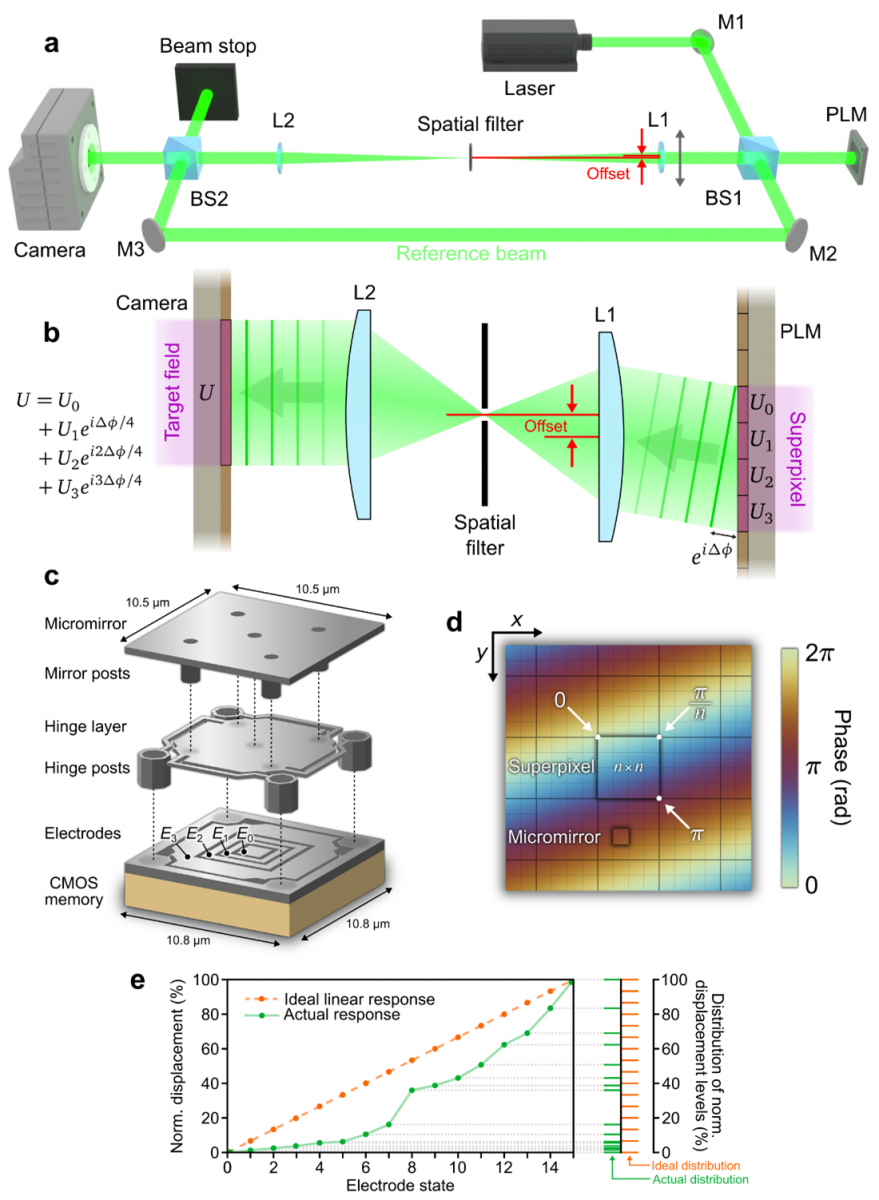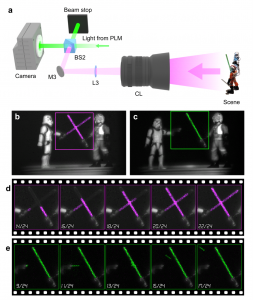
High-speed binary phase-engraved superpixels improve complex light modulation
GA, UNITED STATES, April 2, 2025 /EINPresswire.com/ -- Complex light modulation—controlling light's amplitude and phase—is key to many laser applications such as optical tweezers and holographic displays. To achieve such modulation at high speeds, amplitude-based electronic modulators use multi-pixel clusters called 'superpixels'. Now, binary phase-engraved superpixels implemented with a Texas Instruments phase light modulator are reported, showing significant improvements over previous methods. The new approach demonstrates accurate high-speed complex light modulation, paving the way for applications to beam shaping and augmented reality display.
Complex modulation of optical fields (i.e., the control of light's amplitude and phase) is vital to the application of lasers in diverse fields, such as optical communication, three-dimensional display, biomedical imaging, and astronomy. Yet, despite dazzling progress seen by applications of complex field modulation (CFM), improvements to technical capabilities such as accuracy, speed, and versatility remain highly in demand.
Key to the overall performance of CFM technologies are spatial light modulators (SLMs): advanced devices that provide two-dimensional arrays of electronically addressable pixels whose optical properties can be independently controlled to influence a small portion of an incident light field. However, despite ongoing improvements to SLM technology, the requirements of large pixel count (> 1 megapixel) and fast refresh speed (> 1,000 frames-per-second) demanded by CFM necessarily restrict the range of optical influences possible for SLM pixels. In particular, the high-resolution and high-speed modulation provided by digital micromirror devices (DMDs) restricts the influence of its pixels to the simple "ON" or "OFF" control of light amplitude, implemented via reflection from microscopic mirrors that are electronically tilted in one of two directions.
Despite such limitations, the detailed control of both amplitude and phase is made possible when the optical influence of individual SLM pixels are combined via multi-pixel clusters called 'superpixels'. When implemented using DMDs, binary amplitude-based superpixel CFM allows for the encoding of complex optical fields by single binary holograms, delivering practical advantages in terms of speed, resolution, device calibration, and efficient data storage. However, due to the limitations of binary modulation, the operation of DMD-based superpixel CFM results in the majority of incident light being wasted, significantly limiting the overall efficiency to below 10%.
Fortunately, advancements in SLM technology are now providing the basis to overcome these limitations. In contrast to DMD's "tip-tilt" actuation of micromirrors, the phase light modulator (PLM), undergoing development by Texas Instruments, actuates micromirrors via "piston-mode" displacements, with each reflective pixel able to influence light phase through the selection of one of 16 positional states. Importantly, the construction of the PLM is highly similar to DMDs, allowing it to retain the advantages of high speed and pixel counts while also exhibiting immunity to pixel crosstalk, polarization independency, and high operation stability.
Unfortunately, owing to fabrication limitations, existing PLMs produce a non-uniform distribution of phase levels, reducing the information imparted by pixel control to below 4 bits in practice. More importantly, this phase-distribution characteristic could mean that device-specific calibration and compensation is required for sensitive CFM using PLMs—a situation in contrast to the pixels of DMDs that do not have intermediate states between "ON" and "OFF".
To address the efficiency limitations of superpixel CFM implemented with DMDs while also taking advantage of the exciting capabilities delivered by the new technology of PLM devices, we have developed binary phase-engraved (BiPE) superpixel CFM. Our technique, now published in Light: Advanced Manufacturing, extends the phase-only modulation capabilities of the PLM using a unique superpixel design (Fig. 1). Owing to the fact that PLM micromirrors do not discard light via tilting, BiPE superpixels can make use of all incident light components, enabling our method to obtain an optical efficiency intrinsically higher than that possible with amplitude-based SLMs. Moreover, while the 4-bit operation of PLM micromirrors confronts a non-uniform phase response (Fig. 1e), the operation of BiPE superpixels requires only the use of binary phase states corresponding to the selective introduction of half-wavelength phase shifts, thus entirely bypassing issues of PLM nonlinearity. Surprisingly, despite this 1-bit operation of PLM pixels, we show that the combinatorics of binary phase superpixel modulation enriches BiPE superpixels with a 10-fold increase in the number of accessible complex field states as compared to binary amplitude-based superpixels.
Used with current PLM prototypes, BiPE superpixels have achieved high-accuracy spatial amplitude and phase modulation at speeds of up to 1.44 kHz (Fig. 2). We have also demonstrated BiPE-superpixel-based CFM for several applications, such as structured beam shaping, advanced image projection, and augmented reality (AR) display (Fig. 3). Our future work includes the development of pattern generation algorithms that could speed up the calculation of BiPE superpixel holograms using multi-core computing hardware such as graphics processing units. We believe this ability will empower the BiPE-superpixel approach for CFM applications demanding adaptive display and/or featuring lightweight computational resources.
References
DOI
10.37188/lam.2025.017
Original Source URL
https://doi.org/10.37188/lam.2025.017
Funding information
This work was supported in part by the Natural Sciences and Engineering Research Council of Canada (Grant Nos. RGPIN-2024-05551, ALLRP 592389-23), the Canada Research Chairs Program (Grant No. CRC-2022-00119), and the Fonds de Recherche du Québec–Nature et Technologies (Grant Nos. 203345–Centre d’Optique, Photonique, et Lasers).
Lucy Wang
BioDesign Research
email us here
Distribution channels: Manufacturing, Technology
Legal Disclaimer:
EIN Presswire provides this news content "as is" without warranty of any kind. We do not accept any responsibility or liability for the accuracy, content, images, videos, licenses, completeness, legality, or reliability of the information contained in this article. If you have any complaints or copyright issues related to this article, kindly contact the author above.
Submit your press release


